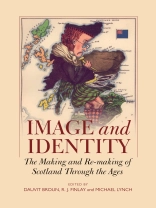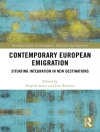This volume looks at the way that perceptions of Scottish identity have changed through the centuries, from early medieval to modern times.
‘The idea of Scotland as a single country, corresponding to the realm of the king of Scots, and of the Scots as all the kingdom’s inhabitants, may only have taken root during the 13th century.’ – Dauvit Broun
‘The 18th century is marked by a period of often competing Scottish identities, and the emergence of the British state as a complicating factor in the equation.’ – R. J. Finlay
‘Scottish identity has never been a fixed, immutable idea, whether held in the head or in the gut . . . some of the most enduring myths of Scotland’s Protestant identity were, like Ireland’s Catholic identity, creations of the 19th century: they included Jenny Geddes as a Protestant Dame Scotia, throwing a stool into the works of an Anglican-style church, and the Magdalen Chapel in Edinburgh, the home of a staunchly Catholic graft guild throughout much of the 1560s becoming the ‘workshop of the Reformation’ in John Knox’s time.’ – Michael Lynch
Giới thiệu về tác giả
Dauvit Broun is Professor of Scottish History at the University of Glasgow and specialises in medieval Scottish history.












